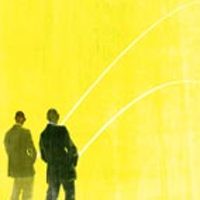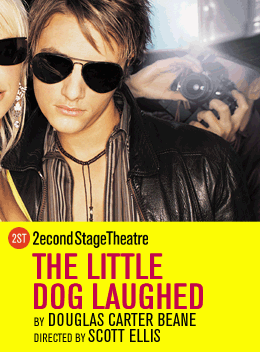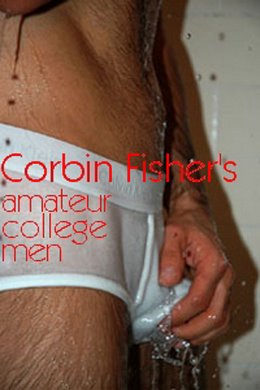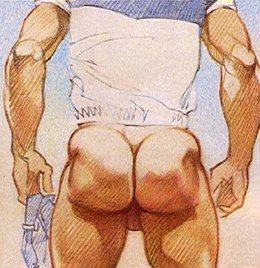French 'starchitect's' debutante
French 'starchitect's' debutante is a Minneapolis knockout
By Blair Kamin
Tribune architecture critic
Published June 18, 2006
MINNEAPOLIS -- He's big. He's bald. He wears black. And he's brilliant, a four-star impresario of space and light.
Neither a hard-core modernist nor a soft-minded postmodernist, Paris architect Jean Nouvel has long been willing to use traditional forms. The results have been beguiling, from the jewel-like Arab World Institute in Paris to his unbuilt Endless Tower, a competition-winning design for a glassy, cylinder-shaped Paris skyscraper that was meant to fade into the sky. The tower looked so good (and so real) in photomontages that bewildered tourists would call Nouvel's office, asking where it was.
Now Nouvel has come up with another stunner, but this one's no mirage. It's the new home of the Guthrie Theater, the renowned resident theater company, set to open Saturday. Soaring above the banks of the Mississippi River, the $125 million building is vintage Nouvel, echoing the muscularity of nearby grain elevators and flour mills while delivering a jolt of modernity with its sleek blue and yellow walls.
The project, Nouvel's first in the United States, is by far the best of three new buildings here, including a downtown library by Cesar Pelli and an art museum addition by Michael Graves. Coming on top of last year's adventurous addition to the Walker Art Center by Pritzker Architecture Prize winners Jacques Herzog and Pierre de Meuron, they give this city, best known for its frigid winters and chronic niceness, a $370 million burst of construction devoted to culture and the arts.
While the Guthrie may disappoint those who think every project should possess the edginess and technological inventiveness of Frank Gehry's exuberant jumbles of metal, it compensates with spectacular features of its own, including (shades of the Endless Tower) a raised lobby called the Endless Bridge. Like an outstretched finger, the bridge cantilevers the equivalent of 12 stories toward the Mississippi, offering drop-dead views of the river valley.
Engaging the past
Only time and audiences will tell how the Guthrie's three theaters, including a new version of its signature thrust stage, fare as performance spaces. But the project already stands as one of the finest marriages of building and site since Gehry's Guggenheim Museum revitalized the waterfront of the old Spanish shipbuilding city of Bilbao nine years ago. The Guthrie seems both utterly new and as if it was always there. This is the essence of Nouvel's refreshingly thoughtful stance -- which is not about novelty for novelty's sake but about newness made newer by a complex, rather than saccharine, engagement of the past.
"Modernism is a friend of history," Nouvel said during a recent tour, "because history is a succession of modernities."
The theater's surroundings, a short cab ride from the glistening skyscrapers of downtown Minneapolis, form a scene that could be called "post-industrial picturesque:" tumbling waterfalls, an arched stone bridge, and massive grain elevators and flour mills topped by industrial signs bearing storied names such as Gold Medal Flour and Pillsbury. They recall the days, from 1880 to 1930, when Minneapolis was the nation's flour-milling capital, processing heaps of grain brought by rail from the Dakotas and Canada.
Today, the shutdown mills are grist themselves -- for loft conversions that stand alongside new apartments and the usual signs of gentrification, such as yuppies walking their pampered pooches. The smell in the air is of money, not flour. And the risk is that the new gentry will grind down and Martha Stewart-ize the area's toughness.
Nouvel, thankfully, is having none of it.
His steel-frame building, completed with the Minneapolis firm Architectural Alliance, is imaginatively based on the idea that theater itself is a kind of production, a manufactured spectacle of rigging and stage sets and scripts. Throughout, the building expresses the spectacle of theater and creates its own spectacle.
To catch the best views, Nouvel makes the unusual move of lifting the three theaters -- a 1,110-seat thrust stage and a 700-seat proscenium theater entered on the 4th floor and a 250-seat black box entered on the 9th floor -- into the air. Public lobbies, back-of-house facilities and theater equipment occupy the other floors. Across the street is a 1,000-car parking garage topped by the Guthrie's setmaking shop. Sets will roll across the bridge like widgets on a factory's assembly line. Nouvel makes the process visible to theater-goers in the 4th-floor lobby with a wall of shockingly bluish glass.
"It's like a good restaurant," he quipped. "You can look into the kitchen."
He shapes these functions with appropriate directness, simultaneously communicating the building's uses and relating to its surroundings but never with that tricked-up Ralph Lauren retro look of the New Urbanists.
On the one hand, the Guthrie suggests the massive scale and brute shapes of the old industrial landscape with the expressed curve of the thrust stage and the blocky rectangular structure that houses its proscenium and black-box theaters. On the other hand, the building deftly separates itself from the past with such elements as three LED-equipped sign masts and its tough but elegant dark blue steel cladding. Nouvel calls the color "twilight blue," saying it represents "l'heure entre chiens et loups," the hour that separates the dogs from the wolves. (Ah, the French. You don't hear that kind of talk in Chicago.)
Coming alive
The outcome is immensely captivating. The Guthrie manages to be tough and welcoming, its sense of mystery and anticipation accented by eight large-scale images from previous Guthrie productions screen-printed in pale white on the building's blue facade. By day, in truth, the images are dull. By night, according to the media kit, they're supposed to float "like ghosts in the dark." However they come off, the building is an instant landmark, one where the drama starts long before the show begins.
Nouvel being Nouvel -- an architect whose work has been called cinematic because of its ever-shifting effects of space and light -- the drama continues inside, sometimes coming close to being purely theatrical.
Still, a theater is not a church, nor is it a Miesian temple of less-is-more. It's supposed to be festive and dramatic, and Nouvel certainly delivers those qualities without lapsing into old-fashioned movie palace fantasy.
From a spare, well-proportioned lobby, visitors ascend a pair of steeply pitched, tightly framed escalators to the 4th-floor lobby, the walls around them bathed in dancing colored lights. Another lobby, with seating for preshow dining, is directly above on five.
The lobbies, which serve both the thrust and proscenium theaters, are low-ceilinged and feel compressed. Nouvel relieves them by punching a sleek semi-circular opening between them and by teasing you out onto the Endless Bridge. More about that experience in a moment.
The theaters themselves are strikingly beautiful, though they do not quite match the curvaceous, wood-paneled auditorium of Gehry's Walt Disney Concert Hall in Los Angeles, which is among the finest rooms in America.
In the asymmetrical, two-level thrust theater, a dazzling range of autumn colors brightens both the seats and the hovering acoustical panels. The theater is surprisingly intimate for its considerable size. Best of all, it maintains the democratic attitude of architect Ralph Rapson's original Guthrie Theater at the Walker Art Center, which is scheduled to be demolished this summer despite objections from preservationists. A tier of "alpine slope" seats smashes the hierarchical distinction between orchestra and balcony.
Nouvel sets up a deliberate contrast in the proscenium theater, which is as rectilinear and frontal as the thrust theater is organic and almost-in-the-round. Its hot-red velvet seats and mesh side walls manage to be both spare and rich. Red, a traditional theater color, communicates intensity as opposed to the soothing "green rooms" where performers relax before going on stage.
While the nicely -proportioned black box black-box theater near the Guthrie's summit is nothing to write home about, the lobbies leading to the three theaters are showstoppers.
The Endless Bridge is anything but an "on-steroids" version of Minneapolis skywalks, those glass-enclosed steel tubes that protect office workers from the ferocious winter cold. From the 4th-floor lobby, Nouvel leads you up a ramp whose walls are punctuated by narrow windows. Then -- boom! -- you arrive at a large picture window on the side of the bridge that will open (in warm weather, at least) like a jet door.
As a result, you not only see the great river valley panorama, you sense it, feeling the freshness of the waterfront air. Outside, there's a steeply pitched balcony from which you can take in the view.
The cantilevered 9th-floor lobby presents its own eye-popping drama: You emerge from the elevator and are temporarily stunned by the hyperbright yellow light created by floor-to-ceiling, amber-colored glass walls. The effect seems potentially tiresome. But as Nouvel intends, it freeze-frames views of both the riverfront and the skyline, elevating the experience beyond a conventional glass-walled office building. And it is by no means coincidental that the bright-yellow color matches the yellow hues of the "Gold Medal Flour" sign next door. Even as he's bringing you to Future World, Nouvel isn't entirely letting go of the past.
The new Guthrie is all about these balances of old and new, yet it never descends to the level of limp compromise. Instead, old and new energize each other. And so do form and function. The fit between the two is remarkably tight here, though the Endless Bridge is something of an over-the-top appendage -- the wow-inducing folly that just about every cultural project must have today. Still, on the whole, this is what Louis Sullivan called organic architecture: an expressive interpretation of modern realities. For France's architectural impresario, it's a most impressive American debut.
----------
bkamin@tribune.com
By Blair Kamin
Tribune architecture critic
Published June 18, 2006
MINNEAPOLIS -- He's big. He's bald. He wears black. And he's brilliant, a four-star impresario of space and light.
Neither a hard-core modernist nor a soft-minded postmodernist, Paris architect Jean Nouvel has long been willing to use traditional forms. The results have been beguiling, from the jewel-like Arab World Institute in Paris to his unbuilt Endless Tower, a competition-winning design for a glassy, cylinder-shaped Paris skyscraper that was meant to fade into the sky. The tower looked so good (and so real) in photomontages that bewildered tourists would call Nouvel's office, asking where it was.
Now Nouvel has come up with another stunner, but this one's no mirage. It's the new home of the Guthrie Theater, the renowned resident theater company, set to open Saturday. Soaring above the banks of the Mississippi River, the $125 million building is vintage Nouvel, echoing the muscularity of nearby grain elevators and flour mills while delivering a jolt of modernity with its sleek blue and yellow walls.
The project, Nouvel's first in the United States, is by far the best of three new buildings here, including a downtown library by Cesar Pelli and an art museum addition by Michael Graves. Coming on top of last year's adventurous addition to the Walker Art Center by Pritzker Architecture Prize winners Jacques Herzog and Pierre de Meuron, they give this city, best known for its frigid winters and chronic niceness, a $370 million burst of construction devoted to culture and the arts.
While the Guthrie may disappoint those who think every project should possess the edginess and technological inventiveness of Frank Gehry's exuberant jumbles of metal, it compensates with spectacular features of its own, including (shades of the Endless Tower) a raised lobby called the Endless Bridge. Like an outstretched finger, the bridge cantilevers the equivalent of 12 stories toward the Mississippi, offering drop-dead views of the river valley.
Engaging the past
Only time and audiences will tell how the Guthrie's three theaters, including a new version of its signature thrust stage, fare as performance spaces. But the project already stands as one of the finest marriages of building and site since Gehry's Guggenheim Museum revitalized the waterfront of the old Spanish shipbuilding city of Bilbao nine years ago. The Guthrie seems both utterly new and as if it was always there. This is the essence of Nouvel's refreshingly thoughtful stance -- which is not about novelty for novelty's sake but about newness made newer by a complex, rather than saccharine, engagement of the past.
"Modernism is a friend of history," Nouvel said during a recent tour, "because history is a succession of modernities."
The theater's surroundings, a short cab ride from the glistening skyscrapers of downtown Minneapolis, form a scene that could be called "post-industrial picturesque:" tumbling waterfalls, an arched stone bridge, and massive grain elevators and flour mills topped by industrial signs bearing storied names such as Gold Medal Flour and Pillsbury. They recall the days, from 1880 to 1930, when Minneapolis was the nation's flour-milling capital, processing heaps of grain brought by rail from the Dakotas and Canada.
Today, the shutdown mills are grist themselves -- for loft conversions that stand alongside new apartments and the usual signs of gentrification, such as yuppies walking their pampered pooches. The smell in the air is of money, not flour. And the risk is that the new gentry will grind down and Martha Stewart-ize the area's toughness.
Nouvel, thankfully, is having none of it.
His steel-frame building, completed with the Minneapolis firm Architectural Alliance, is imaginatively based on the idea that theater itself is a kind of production, a manufactured spectacle of rigging and stage sets and scripts. Throughout, the building expresses the spectacle of theater and creates its own spectacle.
To catch the best views, Nouvel makes the unusual move of lifting the three theaters -- a 1,110-seat thrust stage and a 700-seat proscenium theater entered on the 4th floor and a 250-seat black box entered on the 9th floor -- into the air. Public lobbies, back-of-house facilities and theater equipment occupy the other floors. Across the street is a 1,000-car parking garage topped by the Guthrie's setmaking shop. Sets will roll across the bridge like widgets on a factory's assembly line. Nouvel makes the process visible to theater-goers in the 4th-floor lobby with a wall of shockingly bluish glass.
"It's like a good restaurant," he quipped. "You can look into the kitchen."
He shapes these functions with appropriate directness, simultaneously communicating the building's uses and relating to its surroundings but never with that tricked-up Ralph Lauren retro look of the New Urbanists.
On the one hand, the Guthrie suggests the massive scale and brute shapes of the old industrial landscape with the expressed curve of the thrust stage and the blocky rectangular structure that houses its proscenium and black-box theaters. On the other hand, the building deftly separates itself from the past with such elements as three LED-equipped sign masts and its tough but elegant dark blue steel cladding. Nouvel calls the color "twilight blue," saying it represents "l'heure entre chiens et loups," the hour that separates the dogs from the wolves. (Ah, the French. You don't hear that kind of talk in Chicago.)
Coming alive
The outcome is immensely captivating. The Guthrie manages to be tough and welcoming, its sense of mystery and anticipation accented by eight large-scale images from previous Guthrie productions screen-printed in pale white on the building's blue facade. By day, in truth, the images are dull. By night, according to the media kit, they're supposed to float "like ghosts in the dark." However they come off, the building is an instant landmark, one where the drama starts long before the show begins.
Nouvel being Nouvel -- an architect whose work has been called cinematic because of its ever-shifting effects of space and light -- the drama continues inside, sometimes coming close to being purely theatrical.
Still, a theater is not a church, nor is it a Miesian temple of less-is-more. It's supposed to be festive and dramatic, and Nouvel certainly delivers those qualities without lapsing into old-fashioned movie palace fantasy.
From a spare, well-proportioned lobby, visitors ascend a pair of steeply pitched, tightly framed escalators to the 4th-floor lobby, the walls around them bathed in dancing colored lights. Another lobby, with seating for preshow dining, is directly above on five.
The lobbies, which serve both the thrust and proscenium theaters, are low-ceilinged and feel compressed. Nouvel relieves them by punching a sleek semi-circular opening between them and by teasing you out onto the Endless Bridge. More about that experience in a moment.
The theaters themselves are strikingly beautiful, though they do not quite match the curvaceous, wood-paneled auditorium of Gehry's Walt Disney Concert Hall in Los Angeles, which is among the finest rooms in America.
In the asymmetrical, two-level thrust theater, a dazzling range of autumn colors brightens both the seats and the hovering acoustical panels. The theater is surprisingly intimate for its considerable size. Best of all, it maintains the democratic attitude of architect Ralph Rapson's original Guthrie Theater at the Walker Art Center, which is scheduled to be demolished this summer despite objections from preservationists. A tier of "alpine slope" seats smashes the hierarchical distinction between orchestra and balcony.
Nouvel sets up a deliberate contrast in the proscenium theater, which is as rectilinear and frontal as the thrust theater is organic and almost-in-the-round. Its hot-red velvet seats and mesh side walls manage to be both spare and rich. Red, a traditional theater color, communicates intensity as opposed to the soothing "green rooms" where performers relax before going on stage.
While the nicely -proportioned black box black-box theater near the Guthrie's summit is nothing to write home about, the lobbies leading to the three theaters are showstoppers.
The Endless Bridge is anything but an "on-steroids" version of Minneapolis skywalks, those glass-enclosed steel tubes that protect office workers from the ferocious winter cold. From the 4th-floor lobby, Nouvel leads you up a ramp whose walls are punctuated by narrow windows. Then -- boom! -- you arrive at a large picture window on the side of the bridge that will open (in warm weather, at least) like a jet door.
As a result, you not only see the great river valley panorama, you sense it, feeling the freshness of the waterfront air. Outside, there's a steeply pitched balcony from which you can take in the view.
The cantilevered 9th-floor lobby presents its own eye-popping drama: You emerge from the elevator and are temporarily stunned by the hyperbright yellow light created by floor-to-ceiling, amber-colored glass walls. The effect seems potentially tiresome. But as Nouvel intends, it freeze-frames views of both the riverfront and the skyline, elevating the experience beyond a conventional glass-walled office building. And it is by no means coincidental that the bright-yellow color matches the yellow hues of the "Gold Medal Flour" sign next door. Even as he's bringing you to Future World, Nouvel isn't entirely letting go of the past.
The new Guthrie is all about these balances of old and new, yet it never descends to the level of limp compromise. Instead, old and new energize each other. And so do form and function. The fit between the two is remarkably tight here, though the Endless Bridge is something of an over-the-top appendage -- the wow-inducing folly that just about every cultural project must have today. Still, on the whole, this is what Louis Sullivan called organic architecture: an expressive interpretation of modern realities. For France's architectural impresario, it's a most impressive American debut.
----------
bkamin@tribune.com










0 Comments:
Post a Comment
<< Home